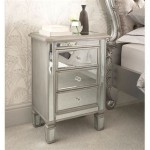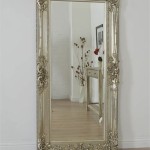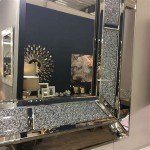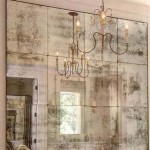How to Mirror an Object in AutoCAD
Mirroring is a fundamental operation in AutoCAD that allows users to create a symmetrical copy of an existing object or set of objects. This function is essential for streamlining the design process, particularly when dealing with symmetrical components, building plans, or intricate patterns. Understanding the mirror command and its various options is crucial for maximizing efficiency and accuracy in AutoCAD drafting.
The mirroring process essentially flips an object across a specified line, known as the mirror line or mirror axis. The resulting mirrored object is a reflection of the original, equidistant from the mirror line but on the opposite side. This article will explore the steps involved in mirroring objects in AutoCAD, highlighting key considerations and best practices for utilizing this powerful tool.
Initiating the Mirror Command
The mirror command can be initiated in several ways within AutoCAD. The most common methods include: typing "MIRROR" or its shortcut "MI" into the command line and pressing Enter; selecting the Mirror icon from the Modify panel on the Home tab of the ribbon; or navigating to the Modify menu on the menu bar (if the menu bar is displayed) and selecting Mirror. Regardless of the chosen method, once initiated, the command prompts the user to select the objects to be mirrored.
After initiating the command, the user must select the object(s) that will be mirrored. AutoCAD allows for various selection methods, including: direct selection (clicking on individual objects); window selection (selecting objects within a rectangular area); crossing window selection (selecting objects that are entirely or partially within a rectangular area); and using selection filters to select objects based on specific properties. Once the desired objects are selected, press Enter to confirm the selection and proceed to defining the mirror line.
Defining the mirror line is a critical step. The mirror line acts as the axis around which the selected objects will be mirrored. AutoCAD prompts the user to specify the first point of the mirror line. This point can be defined by clicking on a location in the drawing area, entering coordinates, or using object snaps to select existing geometry. Object snaps, such as Endpoint, Midpoint, Center, and Intersection, are particularly useful for precisely defining the mirror line relative to other objects in the drawing.
Following the selection of the first point, AutoCAD prompts the user to specify the second point of the mirror line. Similar to the first point, this point can be defined by clicking, entering coordinates, or using object snaps. The line defined by these two points is the actual mirror axis. The orientation of this line directly affects the position of the mirrored object. For example, a vertical mirror line will result in a horizontally flipped object, while a horizontal mirror line will result in a vertically flipped object.
After defining the mirror line, AutoCAD presents the option to "Erase source object?". This prompt allows the user to determine whether the original objects should be deleted after the mirroring operation is completed. The default option is "No," meaning the original objects will be retained, and a mirrored copy will be created. If the user selects "Yes," the original objects will be deleted, effectively moving them from one side of the mirror line to the other. The choice depends entirely on the intended design outcome. If creating a symmetrical design, retaining the original is usually desired. If simply repositioning the object via mirroring, erasing the source might be preferred.
Understanding Mirror Command Options
Beyond the basic operation, the mirror command offers several options that provide greater control over the mirroring process. While not immediately apparent, these options can significantly enhance the utility and precision of the command.
The "Erase source object?" option, already discussed, is often overlooked but provides a critical choice. Typing "Y" for yes or "N" for no will determine whether the original object is deleted after the mirror operation. Remember that pressing enter defaults to the value shown in angled brackets. This allows faster operation if the default is the desired choice.
Another valuable feature involves using object snaps effectively. As mentioned earlier, object snaps ensure precise placement of the mirror line. Utilizing object snaps like Midpoint, Endpoint, Center, and Intersection allows for accurate alignment of the mirror line with existing geometry, guaranteeing a consistent and predictable mirroring result. For example, mirroring a rectangle around the midpoint of one of its sides ensures perfect symmetry.
The ORTHO mode significantly impacts the creation of the mirror line. When ORTHO mode is enabled, the mirror line is constrained to horizontal or vertical orientations. This can be particularly useful when creating symmetrical designs that align with standard orthogonal axes. Toggle the ORTHO mode on or off by pressing the F8 key, or clicking the ORTHO icon on the status bar.
While not a direct option *within* the mirror command, the POLAR TRACKING setting can also assist in controlling the mirror line direction. POLAR TRACKING allows snapping to specific angles as you move the cursor, which can be beneficial to create a mirror line at a specific angle, relative to other drawing elements.
Best Practices for Mirroring in AutoCAD
To ensure efficient and accurate mirroring in AutoCAD, several best practices should be observed. Adhering to these guidelines will streamline the design process and minimize potential errors.
Always verify the accuracy of the mirror line. The position and orientation of the mirror line directly influence the placement of the mirrored object. Before finalizing the mirroring operation, carefully examine the mirror line to ensure it is correctly positioned relative to the objects being mirrored and any other relevant geometry in the drawing. Zooming in for a closer inspection often helps in preventing unintentional errors.
Utilize object snaps whenever possible. Object snaps provide a precise and reliable method for defining the mirror line. By snapping to existing geometry, such as endpoints, midpoints, or centers, you can ensure the mirrored object is accurately positioned and aligned. Consistently using object snaps minimizes the potential for misalignment and improves the overall accuracy of the drawing.
Consider the implications of erasing the source object. Before confirming the mirroring operation, carefully consider whether the original objects should be deleted. Erasing the source object can be beneficial in certain situations, such as repositioning an object or creating a simplified drawing. However, in most cases, retaining the original objects is preferable, particularly when creating symmetrical designs. Review the design requirements before making a decision.
Employ layers effectively. Using layers to organize different elements of the drawing can significantly simplify the mirroring process. For example, by placing symmetrical components on a separate layer, you can easily select and mirror all related objects simultaneously. This approach also facilitates efficient editing and modification of the drawing. Place the result of the mirror on the same layer as the original. This will help you keep your drawing organized.
When mirroring text or attributes, be aware of their orientation. Text and attributes can sometimes appear mirrored incorrectly, particularly if they are not aligned with the current user coordinate system (UCS). To address this issue, use the MIRRTEXT system variable. When MIRRTEXT is set to 1, text is mirrored along with the other objects. When set to 0, text is not mirrored and remains readable. Set MIRRTEXT to 0 before mirroring in situations where readability is important.
Mirroring is a fundamental tool in AutoCAD that allows users to efficiently create symmetrical designs or reposition objects accurately. By understanding the command options, including the selection methods, defining the mirror line, and choosing whether to erase the source object, users can harness the full potential of the mirror command. Implementing best practices such as verifying mirror line accuracy, utilizing object snaps, and considering the implications of erasing the source object ensures that the mirroring process is precise and aligned with the intended design outcomes.

Autocad Mirror Javatpoint

3 2 How To Mirror Objects In Autocad Tutorial

Autocad Mirror Javatpoint

Understanding Autocad Mirror Command

Mirror 3d Commands Practical Autodesk Autocad 2024 And Lt Book

Solved Flip Objects Over Arc Autodesk Community Autocad

Autocad Mirror Javatpoint

How To Mirror Objects In Autocad

Mirror Tool Problems Autodesk Community Autocad

How To Mirror Objects In Autocad Easily








